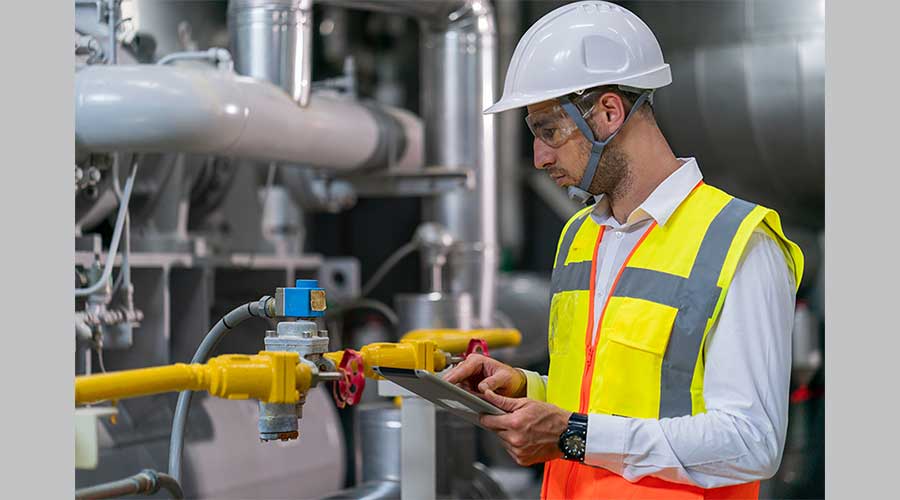by John Rimer — Nearly 70 percent of companies are struggling to hire candidates, with just under 50 percent reporting staffing shortages. Although struggling to fill skilled trade positions is nothing new, Covid-19 drastically deteriorated the situation with a mass exodus of the workforce. Adding insult to injury, the troubles are not yet over, as another 27 percent of the workforce is set to retire by 2030.

While organizations vie for more hands to turn wrenches, the choked supply chain is furthering the challenge of operations with long lead times and material shortages. Common parts needed to keep equipment operating are simply not available or will not arrive for weeks, if not months. Projects and equipment installations are essentially being shuttered due to long lead times. For example, major equipment, such as chillers and switchgear, purportedly have lead times of 3 to 5 years. News reports speculate that the supply chain will stumble well into 2024.
A shallow labor pool and strained supply chain are setting the industry up for a perfect storm, impacting operations and further stressing facility departments.
While this does paint a bleak picture, this does not mean facility organizations should just lay down and wait it out. Facility practitioners are too creative and stubborn for that. Rather this is the industry’s time to shine, just like it did during the Covid-19 pandemic.
Use these pains and strains to promote and justify an evolution, if not a revolution, for your facility management program. Drive your departments and organizations to get ahead of the curve, instead of being crushed by it. The focus must change from reactive to proactive, which requires a plan for success.
Many, if not most organizations are at least 50 percent reactive. The two most prominent causes for this firefighting are not enough resources to perform preventive maintenance (or at least some have convinced themselves of such) and a growing deferred maintenance backlog. Reactive maintenance is grossly inefficient and considerably more costly than planned maintenance.
While this cloud of firefighting weighs on so many, it does have a silver lining. If reactive maintenance is an inefficient use of resources, then a proactive approach would allow more production from current staffing levels. The question is how to get there? Here are three options:
Preventive maintenance
The first key step is to prioritize preventive maintenance work orders versus corrective. This may require coaching, changing staff direction and adjusting customer expectations. However, both staff and the C-suite will get on board once they understand the benefit realized by transitioning from reactive to proactive.
To correctly prioritize work orders, business processes and supporting facility systems must be identified, and correspondingly, criticality assigned. The resulting asset criticality, coupled with task importance, will dictate work order priority. Here’s a tip: Define the priority descriptions and remove as much subjectivity as possible.
Granted there are likely not sufficient resources to complete all work orders in a timely manner, thus goals must be set targeting 100 percent completion of the highest priority work orders. This focus on the higher criticality functions communicates to management that the most important items are being addressed despite the strained resources.
All that said, preventive maintenance is not the ultimate destination, as PMs typically require downtime, are labor intensive, and are often intrusive, introducing more failure modes and human error to the system. Do not translate this as stating PMs are bad, rather there are better, more efficient maintenance strategies available to explore.
Predictive maintenance
Predictive maintenance (PdM) can be a great alternative to preventive, as PdM utilizes technology to discern the current condition of equipment, including issues that can be resolved, which, if unchecked, would lead to eventual failure.
Common PdM tools include vibration analysis, infrared thermography, and fluid analysis (e.g., oil, coolant, and refrigerant.) Predictive maintenance generally does not require shutdowns and is less intrusive than preventative maintenance tasks. Additionally, the outputs can be used to better schedule and organize resources, minimizing impact and effort to adequately maintain systems.
Condition-based maintenance
Condition-based maintenance (CBM) further evolves the program to include operational data from additional sources, such as building controls, SCADA systems, and daily rounds. This comprehensive data set is utilized to direct tasking based upon the actual condition of the equipment.
For example, air handler filters are replaced when the pressure drop across the filter bank exceeds the set threshold, in lieu of replacing them every three months, just because it’s been three months. In addition to optimizing staffing resources, this approach can help forecast material needs, offsetting the long lead times plaguing the supply chain.
Being short-handed forces our hand to work smarter. Technology must be leveraged to increase staff efficiency and utilization and to better plan for and acquire material. While these issues do propose a great challenge, they pose an even greater opportunity to progress the industry. Take advantage of this silver lining.




